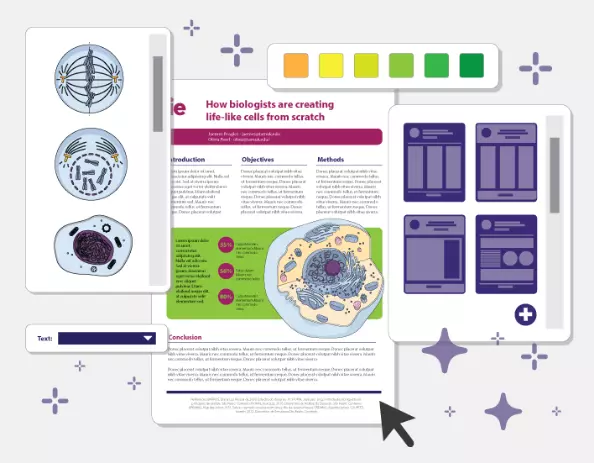A research paper outline aids writers to organize their thoughts. Most contain – apart from its subject – the key points of each paragraph, the thesis, topic sentences, and supporting sentences, quotes or citations. The typical outline of a research paper also consists of other details like subtopics and evidential sources to help the writer stay organized.
In other words, a research paper outline can make the process significantly more manageable, as the paper tends to flow more efficiently.
This article highlights the importance of creating a research paper outline for effective and well-structured projects, reports, and essays.
How To Write A Research Paper Outline?
Conventionally, writers compose a research paper outline after choosing a thesis statement and sourcing research evidence, but before writing the first draft. The depth of detail can change depending on your writing style or the requirements of the paper.
Follow this example on how to organize a research paper outline:
Introduction
This section should aim to engage the reader, by providing context and motivation for the research. You may include here the reason why you chose that particular topic or simply the significance of your research paper’s topic. You may also state what type of approach it is that you will be using in your paper for the entire discussion of your topic. Generally, your Introduction should orient your readers to the major points the rest of the paper will be covering, and how.
Body
The body of your paper is where you will be presenting all your arguments to support your thesis statement. Remember the “Rule of 3” which states that you should find three supporting arguments for each position you take. Start with a strong argument, followed by a stronger one, and end with the strongest argument as your final point.
Conclusion
The conclusion is where you form a summary of all your arguments so you can arrive at your final position. Explain and reiterate why you have ended up with the said conclusion.
Seven Steps To Outline a Research Paper
Remember: plan first, write later. Be sure to make structural changes in the outlining phase, before writing the first draft of your research paper. Adding or removing certain topics early on without wasting time writing them is also good advice.
The typical outline of a research paper is broken up into sections and paragraphs, listing each paragraph’s topic and the related evidence or data to include therein. The depth of detail can change depending on your writing style or the requirements of the paper.
Follow these seven steps to outline a research paper properly:
1. Choose Your Thesis And Gather Sources
Gather primary and secondary sources to back up your thesis, the research paper’s main subject. Once you have settled on a thesis, you will need evidence to support it. Collect all the relevant sources and data early on so that you know what to write.
2. Make A List Of Topics, Subtopics, And Points
Go through your research and note each topic, subtopic, and supporting points. Be sure to keep related information together. Remember that everything you discuss in your paper should relate to your thesis, so omit anything that seems tangential.
If you have highlighted any specific passages or quotes from your sources, feel free to include them too.
3. Choose A Type That Fits The Assignment
Simple papers only require simple outlines, but more advanced topics with lots of research can benefit from outlines that are more detailed. Choose the type of research paper outline that best matches your topic, the assignment’s length, and the complexity of your paper.
4. Find The Best Structure To Present Your Topics
Before actually writing the research paper outline, think long and hard about the order in which you present your topics. What is the most logical sequence? What structure would communicate most clearly to your readers, who may be unfamiliar with these topics?
5. Create The Framework For Your Outline
Rather than writing your research paper outline entirely at once, start with the framework. Try putting the main topics in order without yet including any subtopics or supporting points. Starting with the framework gives you a clear look at the backbone of your research paper.
6. Add More Details
After you are satisfied with the framework, go ahead and add the details. Most research paper outlines benefit from including the paragraph structure, so feel free to add lines about your topic sentence, development/support sentences, and conclusion for each paragraph.
7. Revise To Improve The Structure
Double-check that all your topics are in the optimal order for your reader. Finally, check your completed outline to see if there is room for improvement. This is your last chance before you begin the first draft.
Popular Formats For Outlines
Research paper outlines can be one-level, two-level, and so on, depending on their intricacy. One-level outlines display just the section headings or main topics, while four-level outlines get very detailed with paragraph and sentence breakdowns.
There are three popular formats for research paper outlines: alphanumeric, full sentence, and decimal. Below, we will explain the details of each one.
Alphanumeric Research Paper Outline
Alphanumeric is the most common outline format—with main topics listed as Roman numerals, subtopics as capital letters, specific points for each subtopic as Arabic numerals, and further details for individual points as lowercase letters. You would write the information in quick blurbs—just a few words—instead of complete sentences.
Full-Sentence Research Paper Outline
Full-sentence research paper outlines have the same organization as alphanumeric outlines—with main topics listed as Roman numerals, subtopics as capital letters, subtopic points as Arabic numerals, and details for each point as lowercase letters.
However, the significant difference is that you would write the information in complete sentences instead of in quick blurbs. The advantage is that your outline is more specific and easier to share with colleagues when working as a team. The disadvantage is that it takes a little longer to write.
Decimal Research Paper Outline
Decimal research paper outlines forgo the alphanumeric system and instead use a system of numbers with increasing decimal points—with main topics listed as whole numbers (1 or 1.0), subtopics with one decimal point (1.1), points under a subtopic with two decimal points (1.1.1), and further details with three decimal points (1.1.1.1).
Each new piece of information uses the subsequent number (1.1.1, 1.1.2, etc.), so you always know where you are in the outline. You would write the content for each line in quick blurbs, just like the original alphanumeric formal.
Decimal research paper outlines are the most thorough but can get complicated. They are recommended for writers who prefer technical precision or for lengthy outlines with many topics and subtopics.
Literature Review As An Advanced Knowledge
The purpose of a literature review is to provide a summary, evaluation, and critical analysis of existing research on a particular topic or research question. It aims to identify gaps, inconsistencies, and areas that require further investigation while also providing an overview of the existing knowledge in a particular field.
A literature review also helps researchers to identify relevant theories, methodologies, and approaches from previous studies. Ultimately, a literature review is a critical tool for researchers and scholars as they seek to advance knowledge in their fields.
When doing and writing a literature review, it is good practice to:
- summarize and analyze previous research and theories;
- identify areas of controversy and contested claims;
- highlight any gaps that may exist in research to date.
Create An Infographic That Speaks For Your Paper
Infographics can help people understand complex concepts by using visual aids such as charts, graphs, or diagrams. They can use both images and text in a visual format to explain concepts.
To make an infographic from a research paper, first, create an outline that follows the basic structure of the research paper. Then fill in that outline using content, information, or data referenced in the research paper and put the information into a layout that flows logically.
Science communication is not a discipline taught in most science-related courses, and very often, researchers lack design skills or access to professional software. Still, there is a 120% growth in citations for articles with infographics, meaning they are powerful in generating buzz around research.
So, how do you create interesting infographics from scratch, without professional resources or design skills? Mind the Graph turns scientists into designers, and unlocks creativity with all visual resources needed for effective science communication.


Subscribe to our newsletter
Exclusive high quality content about effective visual
communication in science.




